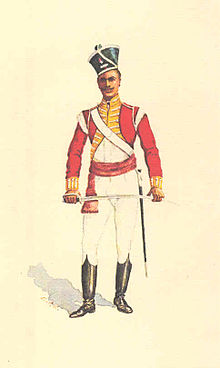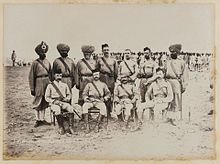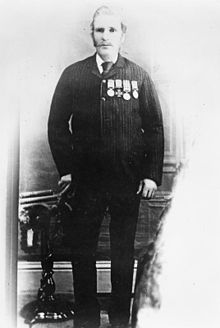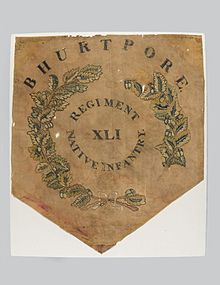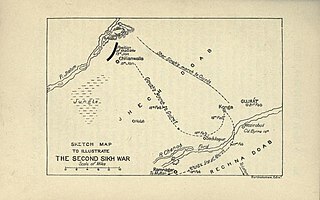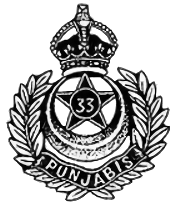| Bengal Native Infantry | |
|---|---|
 Flag of the British East India Company | |
| Active | 1757–1858 (as part of the East India Company's Bengal Army) 1858–1895 (as part of the Bengal Army of the British Raj) 1895–1903 (under the Bengal command of the British Indian Army) |
| Allegiance | East India Company United Kingdom |
| Branch | Bengal Army |
| Role | Infantry |
| Size | 19 Battalions (1764) [1] 74 Regiments (1857) [2] 45 Regiments (1861) [3] |
| Conflicts | Battle of Plassey Third Carnatic War First Anglo-Mysore War Second Anglo-Mysore War Third Anglo-Mysore War First Anglo-Maratha War Cotiote War Fourth Anglo-Mysore War Second Anglo-Maratha War Invasion of Java Anglo-Nepalese War Third Anglo-Maratha War First Anglo-Burmese War First Opium War First Anglo-Afghan War First Anglo-Sikh War Second Anglo-Sikh War Second Anglo-Burmese War Indian Mutiny Second Opium War Second Anglo-Afghan War Suakin Expedition Third Anglo-Burmese War |
The regiments of Bengal Native Infantry, alongside the regiments of Bengal European Infantry, were the regular infantry components of the East India Company's Bengal Army from the raising of the first Native battalion in 1757 to the passing into law of the Government of India Act 1858 (as a direct result of the Indian Mutiny). At this latter point control of the East India Company's Bengal Presidency passed to the British Government. The first locally recruited battalion was raised by the East India Company in 1757 and by the start of 1857 there were 74 regiments of Bengal Native Infantry in the Bengal Army. Following the Mutiny the Presidency armies came under the direct control of the United Kingdom Government and there was a widespread reorganisation of the Bengal Army that saw the Bengal Native Infantry regiments reduced to 45.
Contents
- Numbering of regiments, unit designations and nomenclature
- Recruitment and demographics
- Pre-1857 list of Bengal Native Infantry Regiments
- The Mutiny and its aftermath
- Post-1861 list of Bengal Native Infantry Regiments
- Operational history and legacy
- Operational history
- Legacy
- See also
- References
The title "Bengal Native Infantry" fell out of use in 1885 and the Bengal Infantry regiments ceased to exist when the three separate Presidency armies were absorbed into the British Indian Army in 1903. There are units currently serving in the armies of India, Pakistan and the United Kingdom who can trace their lineage directly to units of the Bengal Native Infantry, for example the Jat Regiment in the Indian Army, the Royal Gurkha Rifles in the British Army and 6th Battalion, The Punjab Regiment in the Army of Pakistan.
